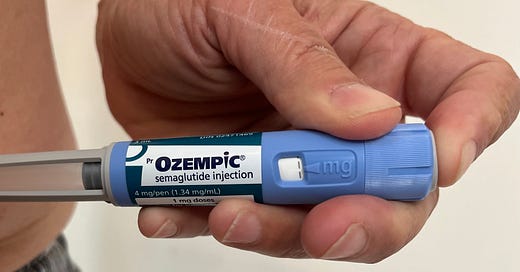The definition of insanity, it’s said, is doing the same thing over and over and expecting a different result. That’s a warning worth heeding for those drafting the resolution ahead of the UN High-Level Meeting on Noncommunicable Diseases (NCDs) this September.
These “high-level” resolutions, with rare exceptions, are often all talk, no action. WHO authors themselves commenting on the impact of earlier UN “high level” meetings on NCDs concluded “these have not always translated into national policy implementation or greater funding allocations.”
The idea of making a health resolution at the UN General Assembly in New York (as opposed to the World Health Assembly in Geneva) is to get the support of Heads of State. But to get results there needs to be something new that is not being done now — an action path to break through the current health trends, almost none of which are on track.
NCDs, which account for two-thirds of deaths in the world, are a worthy topic for a high-level meeting.
The “zero draft” of the resolution does set some useful targets by 2030: 150 million less people are using tobacco, 150 million more people have hypertension under control, and 150 million more people have access to mental health care.
But how will these targets be achieved? How will our interventions be different? Based on the “zero-draft” of the resolution, they will not. Same old pablum.
Meanwhile, in 2023, Science magazine named GLP-1 drugs the “Breakthrough of the Year.” These drugs are used for obesity (e.g. Wegovy and Zepbound) and diabetes (e.g. Ozempic and Mounjaro). There is not even a peep about them in the resolution.
The trick here is to understand that these drugs are not only good for reducing weight (or treating diabetes) but also for improving survival. For example, a randomized trial of people with obesity and coronary artery disease showed a significant reduction in major adverse cardiac events (the primary outcome) and a 19% decrease in all-cause mortality.
As the World Obesity Federation has pointed out, references in the resolution to obesity are limited to prevention, ignoring treatment, and thereby doing a “great disservice” to people living with obesity.
My colleague David Brook and I have estimated that global access to GLP-1 drugs could save potentially 1 million lives per year. This number is based on current evidence for diabetes and obesity; it could increase as indications expand. To put that number in context — it is more than HIV drugs but less than childhood vaccines.
So why is the “Breakthrough of the Year” absent from the resolution? One reason could be concern about the cost of these drugs. Then the focus of the resolution should be to deal with cost and access issues. In fact, the patent on semaglutide (Ozempic and Wegovy) expires in 2026 and many Indian and Chinese companies are already gearing up to produce it, at much lower cost.
Moreover, innovative finance mechanisms (which are a focus of the resolution) could be applied to this problem. My suggestion would be to take the same pay-on-results model that the Gates Foundation alongside the European Investment Bank and Islamic Development Bank have used for polio vaccination and apply it to GLP-1 drugs in pacific small island developing states, where obesity rates reach as high as 70%.
Maybe the explanation is that the WHO has not yet addressed GLP-1s in its pre-qualification, essential medicines list, or obesity guidelines. WHO’s Chief Scientist has said it would release guidelines by July 2025. If guidelines are released soon, perhaps we will see GLP-1s in the next draft(s) of the resolution before the September “high-level” meeting.
Of course there are no magic bullets. Any of these interventions must be delivered in a strong primary health care system — including a focus on prevention. This is adequately addressed in the resolution.
Nonetheless, in the absence of an executable plan on GLP-1s, this resolution stands in stark contrast to the most useful high-level resolution on health at the UN General Assembly: the 2001 declaration on HIV/AIDS which led to WHO’s initiative of treating 3 million people with anti-retroviral drugs by 2005.
Without a plan to harness the newly available and most powerful tools available — GLP-1s — the upcoming resolution risks becoming just another high-level missed opportunity.
Disclosure: I own shares in GLP-1 companies. Please judge these arguments on their merits.





Very insightful, as always
Your insights are an eye opener. Requires an urgent review. That was an oversight or what?